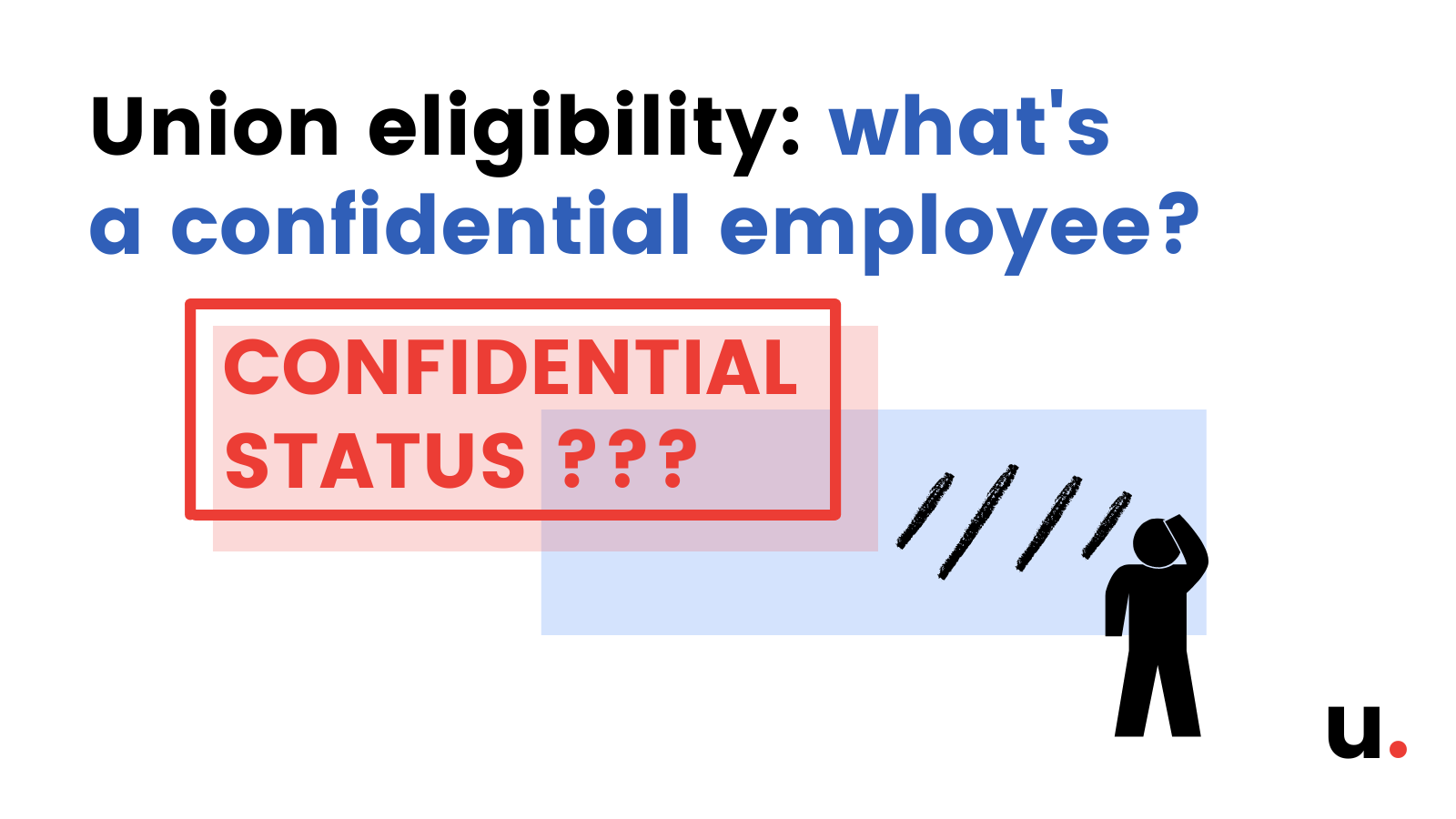One question that comes up when forming a union is who can and cannot be included in a bargaining unit. Several private-sector job categories are excluded from bargaining units and the right to organize under federal labor law. Exclusions such as managers and supervisors are relatively well known. Another notable category excluded from union representation is the confidential employee.
A confidential employee is someone who helps formulate management policies regarding worker conditions and has access to confidential information that helps formulate those labor policies. Some possible examples of confidential employee job titles are: secretaries, assistants to supervisors or managers, and anyone in labor relations departments or HR. If a worker is typically in management meetings, but not a manager themselves, they may well be a confidential employee.
The rationale for excluding confidential employees is that including such members in a union would unfairly disadvantage management. Confidential employees would learn of management’s positions before they're announced during negotiations, and would get the chance to give advance information to the union.

So who is and is not a confidential employee?
According to the Hearing Guide for the National Labor Relations Board (NLRB), “Confidential employees are those who assist and act in a confidential capacity to persons who formulate, determine and effectuate management policies with regard to labor relations or regularly substitute for employees having such duties.”
The NLRB Hearing Guide goes on to describe who is not necessarily a confidential employee; “Mere access to confidential labor relations material is not sufficient to confer confidential status…Employees who have access to confidential financial or business information or personnel records are not [necessarily] considered confidential employees.” So an employee who has access to various confidential materials such as labor relations, financial, business, and personnel information is not necessarily excluded from being part of a bargaining unit.
The Role of the NLRB
Determining if an employee is excluded from a bargaining unit is based on their actual job duties and their relationship to the supposed confidential materials. The NLRB uses what is called a two-part “labor-nexus” test to determine confidential employee status:
1. There is evidence of a confidential working relationship between the employee and the employee's supervisor or manager.
2. The supervisor or manager is significantly involved in labor management relations.
How this plays out during NLRB hearings is good to know. The burden of proof is, generally speaking, put on the party (union or management) challenging the eligibility of a worker. This means that if your union wants someone included and management is seeking to exclude them, it is typically up to management to prove they are not eligible.
Beyond the two-part test above, NLRB officers use a host of questions to determine if an employee is not eligible based on the confidential employee exclusion:
1. What are the duties of the employee? Get specific details.
2. What are the duties of the employee's supervisor? Does the employee's supervisor handle the employer's labor relations, e.g., bargaining or handling grievances, with respect to employees of the entire plant, department or other group?
3. What is the nature of the confidential material handled? Get details of the type of material at issue, e.g., documentation relating to the employer's proposals during bargaining, minutes of meetings where bargaining strategy is discussed, grievance investigation reports, employer's policy on grievances, etc.
4. How does the employee come into contact with the confidential material?
(a) Is the employee present during management meetings regarding labor relations, e.g., preparation for bargaining sessions or discussion of grievances? If so, how often is the employee present (all the time or isolated incident)? Develop details of employee's responsibilities during meetings.
(b) Does the employee assist in preparation of the confidential material? If so, describe how.
(c) Where is the confidential material maintained and how does the employee have access to it?
5. Does this employee substitute for a confidential employee? If so, how often?
6. Do other employees also have access to the alleged confidential material? If so, who? Develop details including the nature of the access to the material.
7. Does employee have access to labor relations policy data regarding the entire plant, one department or other group?
8. Does the employee have access to confidential material prior to the time that material is available to any labor organization or to other employees?
For those union drives that wish to include, or exclude, a potentially confidential employee, answers to these questions will establish your case during an NLRB hearing.
If you and your campaign aren’t close to an NLRB hearing, you don’t need to have all the answers to all these questions immediately! The best place to start is by having a conversation with your co-workers.




